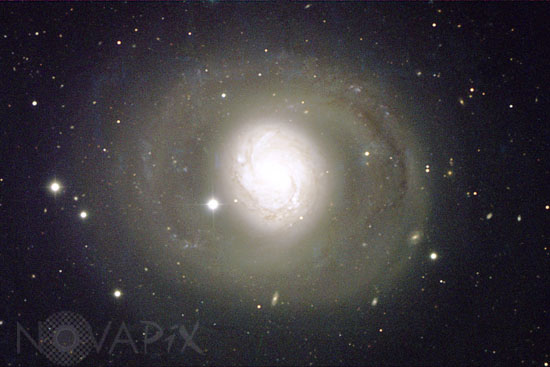Photo Agency - Astronomy - Space - Nature

Active galaxy M77 (NGC 1068) in Cetus
author: Anglo-Australian Observatory/David Malin Images/Novapix
reference: a-gax10-68003
Image Size 300 DPI: 26 * 17 cm
M77 is a Seyfert galaxy, a class of galaxy named for Karl Seyfert who first identified galaxies with emission lines superimposed on the normal radiation from their nuclei in 1943. Such galaxies are a subset of an ill-defined species generally known as 'active galaxies' whose nuclei emit radio- and X-radiation as well as visible light. The least active of the active galaxies are the Seyferts, the most active are the quasars which are mostly so distant that they can only be distinguished from stars by their spectrum.
The common feature of these galaxy types is a small, very bright nucleus thought to host a massive black hole. In Seyferts we see this black hole (or more likely its surrounding shroud of ultra-luminous gas) more or less pole-on. In other active galaxy types at different inclinations the spectrum of the nucleus changes as we see other manifestations of the black hole's influence on its surroundings. M77 is a member of a small group of galaxies at a distance of about 40 million light years.
The common feature of these galaxy types is a small, very bright nucleus thought to host a massive black hole. In Seyferts we see this black hole (or more likely its surrounding shroud of ultra-luminous gas) more or less pole-on. In other active galaxy types at different inclinations the spectrum of the nucleus changes as we see other manifestations of the black hole's influence on its surroundings. M77 is a member of a small group of galaxies at a distance of about 40 million light years.
Contact : Stéphane Aubin +33-(0)9-51-26-53-76
© Novapix - All rights reserved


